Mosses, Liverworts, and Lichens
Media
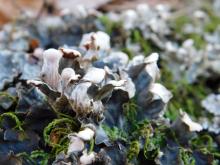
Species Types
Scientific Name
Peltigera canina
Description
Dog tooth lichen, Peltigera canina, is a foliose lichen that usually grows on soil. It’s common and easy to identify. The spore-bearing structures are rusty brown and rolled, standing upright at the lobe tips.
Media
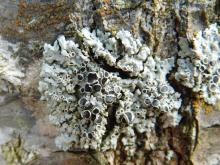
Species Types
Scientific Name
Physcia stellaris
Description
The star rosette lichen is a super common, small foliose lichen that most often grows on trees, including trunks, limbs, and twigs. The pale gray thallus has branching, petal-like lobes. The center of the rosette is almost always crowded with apothecia cups with black or dark gray centers.
Media
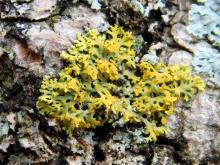
Species Types
Scientific Name
Candelaria spp.
Description
Candleflame lichens (Candelaria spp.) are tiny to small, greenish-yellow foliose lichens that grow in a branching, rosette form. Missouri species typically live on tree trunks.
Media
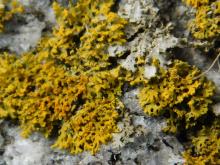
Species Types
Scientific Name
Xanthoria spp. (also Xanthomendoza; Polycauliona)
Description
Orange sunburst lichens are orange or yellow orange. They have a circular, foliose growth pattern with tiny, branching lobes, but this pattern is often lost when these lichens form masses of tiny scale-like fragments. They can be very common on sunny rocks and tombstones.
Media
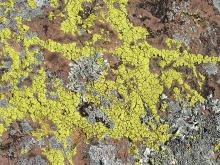
Species Types
Scientific Name
Acarospora spp.
Description
Cobblestone lichens , or cracked lichens, grow flat against their substrate and are textured like lumpy cobblestone streets or old, cracked paint, or they are broken into sections like the mud of a dried lake. Depending on species, the color can range from white to greenish gray to brown to bright yellow.
Media
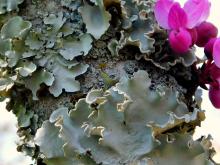
Species Types
Scientific Name
About 436 species in Missouri
Description
A lichen is a composite organism formed by certain fungus species that join with certain algae species. Lichens can be many colors and can be crusty, leaflike, flaky, branching, or mossy. They grow on rocks, trees, or other surfaces.
Media
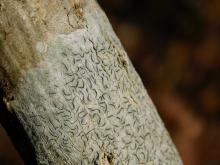
Species Types
Scientific Name
Graphis scripta
Description
The common script lichen produces spores in minute, branching cracks that look like tiny, strange writing. It’s easy to imagine these could be the poems of little elves.
Media
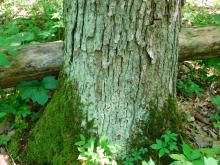
Species Types
Scientific Name
Lepraria spp.
Description
Dust lichens resemble a pale green or gray mass of dust clumped at the damp base of a tree trunk or in a rocky crevice. The dusty grains are tiny packages of lichen that can be moved away to make new lichens elsewhere.
Media

Species Types
Scientific Name
Caloplaca spp.
Description
Firedot lichens are usually orange, yellow, rusty, or brown and look like tiny dots on a surface. To see these crustose lichens well, you often must get on your hands and knees and use a hand lens.
Media
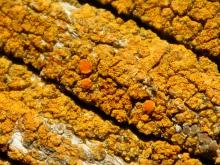
Species Types
Scientific Name
Candelariella spp.
Description
Goldspeck lichens are orange to yellow crustose lichens that are frequently seen growing on rocks, wood, or other substrates. Missouri has about three species.
See Also
About Mosses, Liverworts, and Lichens in Missouri
Mosses, liverworts, hornworts, and lichens seem rather similar, but these organisms are in very different groups. Mosses, liverworts, and hornworts are small, low plants usually found in damp habitats. Unlike more familiar plants, they lack veinlike structures and do not produce flowers or seeds — instead, they produce spores. Meanwhile, lichens are not plants at all: they are a collection of different fungi that have photosynthetic algae living within their tissues.





















